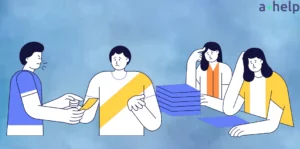The growing concerns about AI in education have finally forced the people in charge to put in laws regarding media literacy. Since children have started to use their parents gadgets from a younger age, the need for proper media education is higher than ever. This movement, originally limited to classrooms, has now reached the legislative floors of state houses and Congress.

✅ AI Essay Writer ✅ AI Detector ✅ Plagchecker ✅ Paraphraser
✅ Summarizer ✅ Citation Generator
Key Takeaways:
- The push for media literacy has one goal – to equip students with the skills to identify AI-generated disinformation and misinformation, especially with the 2024 presidential election approaching.
- At least 18 states have already enacted laws mandating media literacy education, with Delaware setting the highest standards.
- A bipartisan bill, the AI Literacy Act, has been introduced at the federal level to incorporate AI literacy into digital literacy programs.
State-Level Initiatives for Media Literacy
Delaware and New Jersey were the first states to mandate media literacy for K-12 students. These states have set a precedent by requiring detailed instruction on how to use media safely. Other states like Florida, Ohio, California, and Texas have followed suit, although each providing a different level of implementation. For example, Texas law mandates instruction in digital citizenship and focuses on digital forms of communication.
In Illinois, a law passed in 2021 requires high schools to teach a unit of media literacy instruction starting from the 2022-2023 school year. Apart from that, an overarching internet safety law was passed in 2009, with the main focus being on students from third grade and above. Pupils in states with media literacy laws have reportedly responded well to the lessons which is definitely good news. New Jersey school librarian Lisa Manganello stressed that media literacy is about validating opinions with fact-based articles, regardless of one’s stance on a debate:
“[Students can] have an opinion on either side, but you should be able to validate that opinion with a fact-based article.”
Lisa also mentioned that media literacy is ‘an umbrella’ for all of the things they teach in libraries.
The Federal Push Towards Proper Laws
Despite the state-level efforts, there are currently no federal guidelines for teaching media literacy. However, the AI Literacy Act, introduced by Rep. Lisa Blunt-Rochester (D-Del.) and Rep. Larry Bruschon (R-Ind.), are aimed to change that. The bill calls for making AI literacy a top-priority of digital literacy and to incorporate it into existing programs. It also stresses the need of AI literacy for national competitiveness and requires annual reports to Congress on the progress of this initiative. Since its introduction, there has been no movement on the bill, so keep your eyes peeled.
It is clear as day that AI continues to evolve and its influence on media grows. In times like this, children, teens, and, honestly, people of all ages need to know how to perform simple fact-checks when consuming the news. Both state and federal efforts are now on the move to make sure that students have the skills to percieve digital information and to separatew credible sources and AI-generated disinformation, as well as just blatant propaganda (remember, it goes both ways).
Fun Activities on Media Literacy for Teachers
Media literacy is more than necessary, especially for young students. It is the basic step to critical thinking, since digital media and tabloid are frequently misleading. However, teachers are often left on their own, with a task to teach the kids but no sources or guidance. Here are five fun activities to teach media literacy, if you need some inspiration: ✅
| Activity | Description |
|---|---|
| 📰 Fake News Challenge | Divide students into teams and give them various news articles. Ask them to identify which ones are fake and which are real. This activity sharpens their ability to pick out credible sources (and why exactly are they credible). |
| 📲 Ad Analysis | Have students analyze different advertisements to understand the techniques used to persuade consumers. They can discuss the use of color, language, and emotional appeals. |
| 💭 Social Media Simulation | Create a mock social media platform where students can practice identifying and responding to misinformation or biased content. |
| 📸 Create Your Own News | Allow students to become journalists for a day. They can create their own news reports, that should be unbiased. Then, evaluate each report in a group. |
| ✅ Media Literacy Bingo | Create a bingo game with different media literacy concepts (e.g., bias, target audience, propaganda). As students look through these concepts in their daily media consumption ‘intake’, they can mark them off. |
As you can see, there’s no limit to your creativity when it comes to teaching media literacy. The key is to make sure students understand its necessity and how well they can differentiate facts from fiction.
Follow us on Reddit for more insights and updates.





Comments (0)
Welcome to A*Help comments!
We’re all about debate and discussion at A*Help.
We value the diverse opinions of users, so you may find points of view that you don’t agree with. And that’s cool. However, there are certain things we’re not OK with: attempts to manipulate our data in any way, for example, or the posting of discriminative, offensive, hateful, or disparaging material.